Ringkasan:
● Komunitas Sungai Utik menunjukkan ketahanan kolektif melalui musyawarah inklusif dan pengelolaan adat berkelanjutan.
● Gerakan masyarakat sipil perlu menghubungkan kelompok yang terfragmentasi melalui strategi (gerakan) rimpang dan koalisi.
● Advokasi demokrasi diperkuat lewat pendekatan interseksional yang mengaitkan isu adat, lingkungan, dan kebebasan beragama.
Oleh: Afkar Aristoteles Mukhaer | Republikasi dari ICRS
Since the 1980s, the Dayak Iban Menua indigenous community of Sungai Utik has been working to establish customary territory. This initiative arose from the concerns of the indigenous community, located near the Indonesia-Malaysia border, that extractive activities such as mining and illegal logging could threaten their territory.
The process of recognizing this indigenous community has been a long and winding road. It requires cooperation among residents and support from other institutions to navigate the complex process of state recognition. “Don’t become refugees in your own land,” said Agustina, a representative of the Sungai Utik indigenous community, quoting a proverb. “That’s what motivated Apai Janggut and the Sungai Utik elders to fight hard for recognition of this customary territory. We must not leave our children and grandchildren without legal certainty when we die.”
Agustina opened the discussion with Zainal Abidin Bagir from ICRS Yogyakarta, Bivitri Susanti from STH Indonesia Jentera, and Mochamad Mustafa from The Asian Foundation. This discussion is the fourth plenary session at the 7th International Conference and Consolidation on Indigenous Religions (ICIR) entitled “Ecocracy in Practice: Collective Strategies for Protecting Civic Space and Human Rights in Indonesia.”
Recognition and Challenges Remain
After a struggle of approximately 40 years, the Dayak Iban Menua indigenous community of Sungai Utik now owns 9,480 hectares of customary forest. This recognition involved the community living in each longhouse, each of which comprised 28 to 30 families. These deliberations are called beaum or betembung, where traditional elders such as Apai Janggut lead the meetings, but not the absolute majority.
“The final decision is not made through an election or vote, but rather through two or three conclusions. Then, the Tuai Rumah (longhouse leader) will synthesize these into a final decision,” explained Agustina. Beaum is held inclusively and fairly, involving men, women, and children living in the longhouse for the common good. This allows everyone to express their opinions based on their knowledge and expertise.
Another success of the Sungai Utik indigenous community’s deliberations is the contextualization of state-mandated terms regarding the concept of conservation areas. Instead of using terms like “protected area,” “limited use,” and “production,” the community uses local terms such as “kampung taroh,” “kampung galao,” and “kampung endor kerja.”
Although they have now received recognition, it does not mean the Sungai Utik community’s struggle is over. They are currently preparing plans to ensure their community’s resilience against various new challenges. Companies that previously held logging, oil palm, and other plantation permits have now become green carbon managers, which can impact customary forest management. The next challenge is development. Developers often bring an outside perspective that views indigenous communities as in need of development.
Agustina posed a rhetorical question: “Development for whom?” She observed that in areas rich in mining resources, local prosperity does not always follow. In contrast, in Sungai Utik and the surrounding longhouses, communal management of creative economic resources has resulted in better development than that offered by external developers.
The ability to stand on their own two feet has enabled the Sungai Utik community to improve the income and education of its younger generation. Many young people in Sungai Utik are studying at top universities in the country and building relationships that can support community advocacy in their hometowns.
Yet, the challenge lies with the educated young generation who have now migrated. The Sungai Utik community hopes the youth can return as a source of new livelihoods, gain new insights, and improve strategies for community resilience. The Sungai Utik indigenous community’s advocacy does not stop there. They continue the struggle for the surrounding indigenous communities, particularly the Dayak Iban of Kapuas Hulu. This is crucial, according to Agustina, because they are the group that maintains Dayak culture and maintains a strong sense of forest protection.
Rhizome Movement
The term “rhizome movement” has recently emerged in public discussions. Bivitri stated that this movement emerged as a contemporary civil society movement aimed at confronting the overpowering state. State administrators (the government) and their groups want to control economic resources, often marginalizing grassroots communities in practice.
Indonesian democracy is not in good shape. The Economist, in its Intelligence Unit analysis, revealed that Indonesia is quite strong institutionally in the category of “functioning of government.” Yet, Bivitri believes that this function is not for citizens but for oligarchic groups within the highest power structures. Meanwhile, the House of Representatives (DPR) is disconnected from the interests of the people.
What remains of the democracy movement are the citizens themselves. The problem is that citizens face many situations that fragment their resistance. She identified at least four groups based on the context of the resistance:
- Activists. This category encompasses groups that have long been active in democracy issues and promote movements at the grassroots level, such as indigenous communities.
- NGOs, labor unions, and student unions.
- Digital-based groups, such as influencers and digital-based NGOs, typically represent the urban middle class.
- Collectives. Groups are typically formed by young people who reject structures but are skeptical of NGO work. These groups need to be built within the democratic movement, rather than operating independently.
The problem lies in the shortcomings of each group. Grassroots activists, veteran activists, and NGOs are currently facing “survival mode,” especially after the August movement, which has seen many arrests. Meanwhile, new digital-based groups, such as those representing 17+8, are accustomed to an instant mindset. “In fact, if we talk about what we’re facing now, I think we have to talk about social movements that won’t be over in two or six months,” said Bivitri. “We’re in a marathon, not a sprint.”
Rhizome movements refer to groups that emerge within grassroots communities but are not well-organized. These movements are deeply rooted and difficult to eradicate, like rhizomes, but they lack connectivity with other categories of democratic movements. This connectivity can fill the gaps of other groups, thereby strengthening the movement.
“If we only respond to violations of democracy by anger, there won’t be any transformational change. Therefore, we really need to connect the dots,” Bivitri suggested.
Echoing Bivitri, Mustafa explained that the key to protecting civil space lies in strengthening civil society movements. Based on The Asia Foundation’s work program in six regencies and cities in Indonesia, Mustafa concluded that this strengthening can be supported by coalitions, allowing civil society to win small spaces in advocacy.
“In many regions, our colleagues form coalitions to advocate for policies. This can be done even on issues that were previously unimaginable,” he said. Civil society movements need to be encouraged to create a vibrancy that can then encourage many parties, including unorganized groups, to voluntarily participate in advocacy.
However, the biggest challenge is that the value of advocacy work is not necessarily shared by most people. “So, in carrying out activities, the question is whose interests are we representing? Our opponents can be different. This is a strategy that must be discussed,” Mustafa suggested. In this sense, advocacy requires shared values with other communities at the grassroots level so that it can become a shared force in building a civil society movement.
In connecting various elements, it is undeniable that elite involvement is necessary. She gave the example of elite involvement in the movement that succeeded in removing Suharto from power. At that time, the elite were experiencing rifts. Unfortunately, today’s movement lacks allies who can provide transformative support.
According to Mustafa, incorporating elite groups into government provides the movement with the advantage of protection, at least in regional advocacy. Each region has its own strategy for seeking and building coalitions with local elites. Mustafa argues that such coalitions are not merely strategic but also create a consensus for change that is often not possible in traditional advocacy.
“Unfortunately, collaboration with the government often presents a dilemma when dealing with issues that are subject to change. So, we must be careful in collaborating with the government,” he continued. Civil society movements seeking to build collaboration within these coalitions require a critical perspective on every policy they produce.
Bivitri also advises that building citizen movements should not be limited to moral or survival movements. Democracy movements must be oriented towards becoming political movements. To patch up the forces that are still lacking in the movement, it is important to increase the number of “political blocs” that encourage citizen education to solve everyday political problems. Therefore, she suggested that building a citizen movement should not stop at a moral or survivalist movement. The democracy movement must be directed as a political movement. To patch up the movement’s lacking strength, it is crucial to increase the number of “political blocs” that encourage citizen education in resolving everyday political issues.
Intersectional Advocacy
Zainal Abidin Bagir offered intersectional advocacy to encourage shifts or enrich strategies, particularly in legal matters such as litigation. One element that can help strengthen human rights and democracy is freedom of religion or belief (FoRB). The development of FoRB in Indonesia has progressed rapidly over the past 20 years, he argued. In 2000, the second amendment to the 1945 Constitution included a chapter on human rights. Since then, freedom of religion or belief has become an inseparable part of the rights of other citizens in Indonesia.
Zainal divided the 20 years of FoRB advocacy into two periods: the first and the second 10 years. In the first 10 years, the focus was on FoRB being newly introduced, coupled with the ambiguous influence of post-reform human rights freedoms. This period presented a diversity of religious groups operating freely. Religious issues began to enter the courts, and the exclusive religious groups arose. The second period was the presidency of Joko Widodo, during which religious politics became toxic. During this period, a strategy of repression was used against religious groups widely disliked, and accommodation was provided to religious groups deemed moderate and profitable.
“This is what’s called repressive pluralism,” Zainal argued. “It’s as if pluralism fosters pluralist and tolerant groups, while repressing [opposition religious groups].” This repression involved the disbandment and murder of opponents. Meanwhile, groups deemed moderate were given financial rewards, culminating in the granting of mining concessions to religious organizations.
On the one hand, in the second decade, the inclusiveness of the FoRB was being encouraged, although it remained part of repressive pluralism itself. The Ministry of Religious Affairs was the main actor in introducing religious moderation (moderasi beragama) as a flagship. Unfortunately, this FoRB remained stagnant because old problems persisted without resolution. Zainal called it “half-hearted progress” because several failed approaches remained, such as resolving the criminal law on blasphemy, the issue of places of worship, and the recognition of indigenous religions.
According to Zainal, advocacy for religious freedom today should develop in an interconnected way with other rights within the core principles of human rights. Recently, the advocacy of FoRB has begun to involve parties not solely focused on religious freedom itself, but rather on other issues.
“One perceived weakness in FoRB activism is that it’s not connected to activism within the broader framework of democracy. Some consider it unimportant, while others consider FoRB unrelated to issues of corruption, the environment, and so on,” he said. “In fact, everything is connected when viewed through an intersectional methodology.”
He provided an example of how the advocacy of FoRB is part of intersectionality in environmental and indigenous peoples’ issues. NGOs have traditionally viewed indigenous peoples’ struggles as solely related to land. However, recognition of land, as sacred places, should go hand in hand with recognition of its traditions and beliefs. “Land cannot be recognized without tradition. Conversely, tradition cannot be recognized without forest recognition,” Zainal explained.
Nevertheless, integrating perspectives on a civil society issue into intersectionality is not easy. According to Mustafa, using an intersectional approach is not applicable in every situation. Based on his experience, using this approach without caution can lead to advocacy issues becoming overblown and unresolved.
“What is certainly possible and effective is if the intersectionality is in the actors. Building an intersectional coalition, consisting of diverse actors, is easier to practice than in terms of perspectives,” Mustafa said.
Conclusion
To wrap it up, civil society’s struggle to defend its rights as citizens faces significant challenges, ranging from extractive threats at the grassroots level, a state that tends to serve oligarchic groups, to fragmentation within the civil society movement itself. A key thread throughout the discussions is the urgency to abandon isolated work advocacy patterns. Strengthening human rights and civil society issues requires a strategy focused on building connectivity, coalitions, and long-term struggles as a way forward.
This connectivity strategy can be realized in several forms. Bivitri Susanti highlighted the importance of “connecting the dots” between fragmented movement groups to fill gaps and strengthen deeply rooted but less connected “rhizomes.” Strategically, Mochamad Mustafa added the importance of building coalitions to win small advocacy spaces, based on shared values at the grassroots level and critical collaboration with elites or the government.
In addition to connecting actors, Zainal Abidin Bagir emphasized the need for “intersectional advocacy” that connects various issues, such as linking the struggle for recognition of customary land (environmental and indigenous issues) with the recognition of traditions and beliefs (freedom of religion or belief) issue.
The success story of the Sungai Utik indigenous community, presented by Agustina, is clear evidence of the power of collective strategies. Their 40-year struggle for recognition of their customary forests was based on inclusive deliberations and connected all elements of the community.
This success teaches us that advocacy, as Bivitri analogized, is a “marathon” that requires sustained resilience, rather than a “sprint” that seeks speed. Therefore, the democratic movement going forward must not cease to be a moral or survival movement but rather must be directed into a political movement that builds “political blocs” for citizen capacity development. By building intersectional coalitions of actors with shared values, civil society movements can build stronger collective power.
Editor: Andrianor




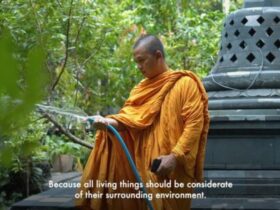
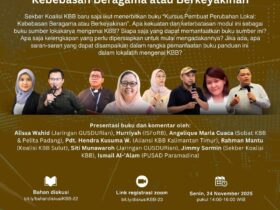

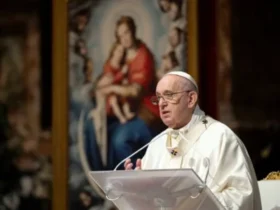
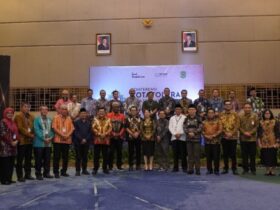
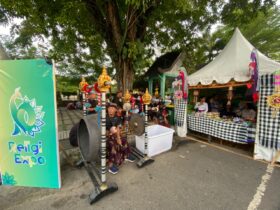
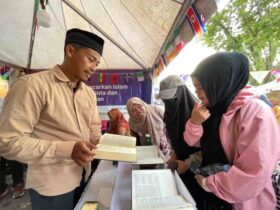
Leave a Reply